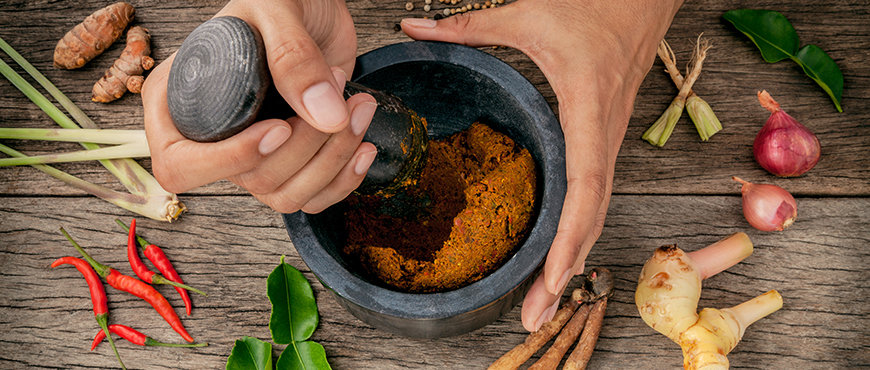Curry, Curry Paste and Curry Powder
There is no direct translation, or Hindi equivalent, for the word ‘curry’. The word is commonly used to group-together several different dishes that often accompany rice or chapati.
‘Curry’ was appropriated to better suit the Portuguese and then the English when they colonized India. In terms of its history – it originated from the Tamil word ‘Kari’, which means sauce. While the word is misinterpreted and generalized, in actuality, there are a multitude of distinct South Indian ‘curries’ that are relished all over the world.
Curry:
Coorg, in Karnataka, is known for its spicy dishes. Every dish has its own unique ingredients and garnishes. However, the South of India isn’t the only location known for its mouthwatering food. The North gives it some tough competition with its rajma, chole, tikka masala, and other options.
Curry Paste:
Just like ‘curry’, a singular definition for ‘curry paste’ does not exist. However, dishes with a significantly thicker sauce-like consistency are referred to as a ‘curry paste’. Commonly, these pastes are made up of onion, tomato, and ginger-garlic. Some also add Indian spices such as turmeric, garam masala, and ground cumin to add its flavor. Interestingly, you can easily prepare a gravy-based dish by boiling two tablespoons of your ‘curry paste’ with any other ingredient such as paneer or veggies!
Curry Powder:
If you’ve heard someone use the term ‘curry powder’ they were probably mistaken. What they meant to say was masalas. When multiple spices are ground and then mixed together, they make masala. We’re sure you have all heard of the famous garam masala, chana masala, and chat masala. All of these are used in different dishes and create the taste that we all love so dearly!
Now that you have a better understanding about the history behind and the difference between curry, curry paste, and curry powder, what are you waiting for? Start shopping for organic spices and spice mixes that will help you make delicious and authentic Indian curries.



